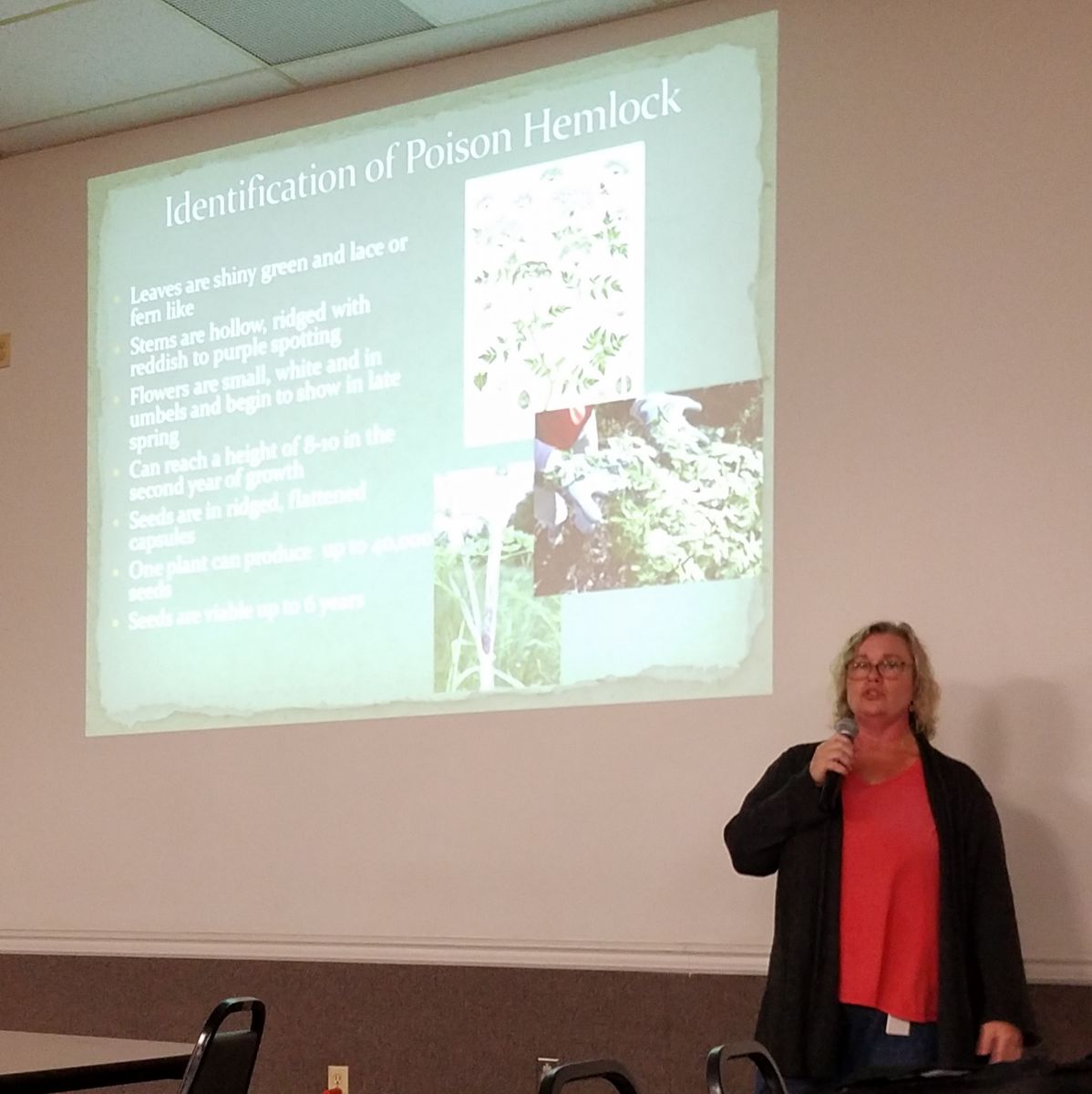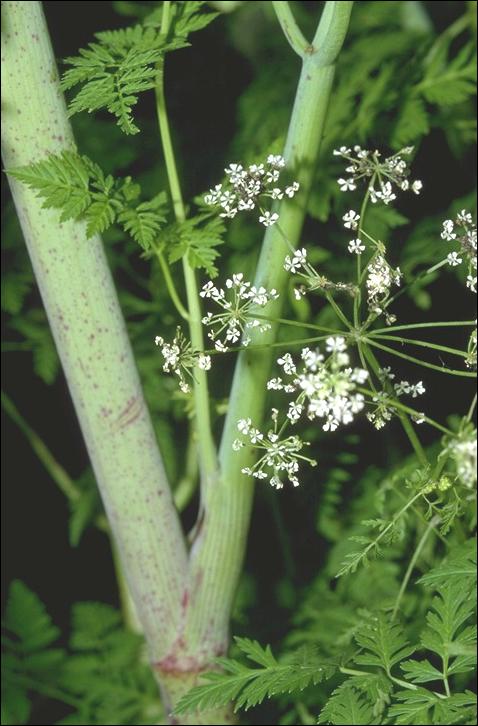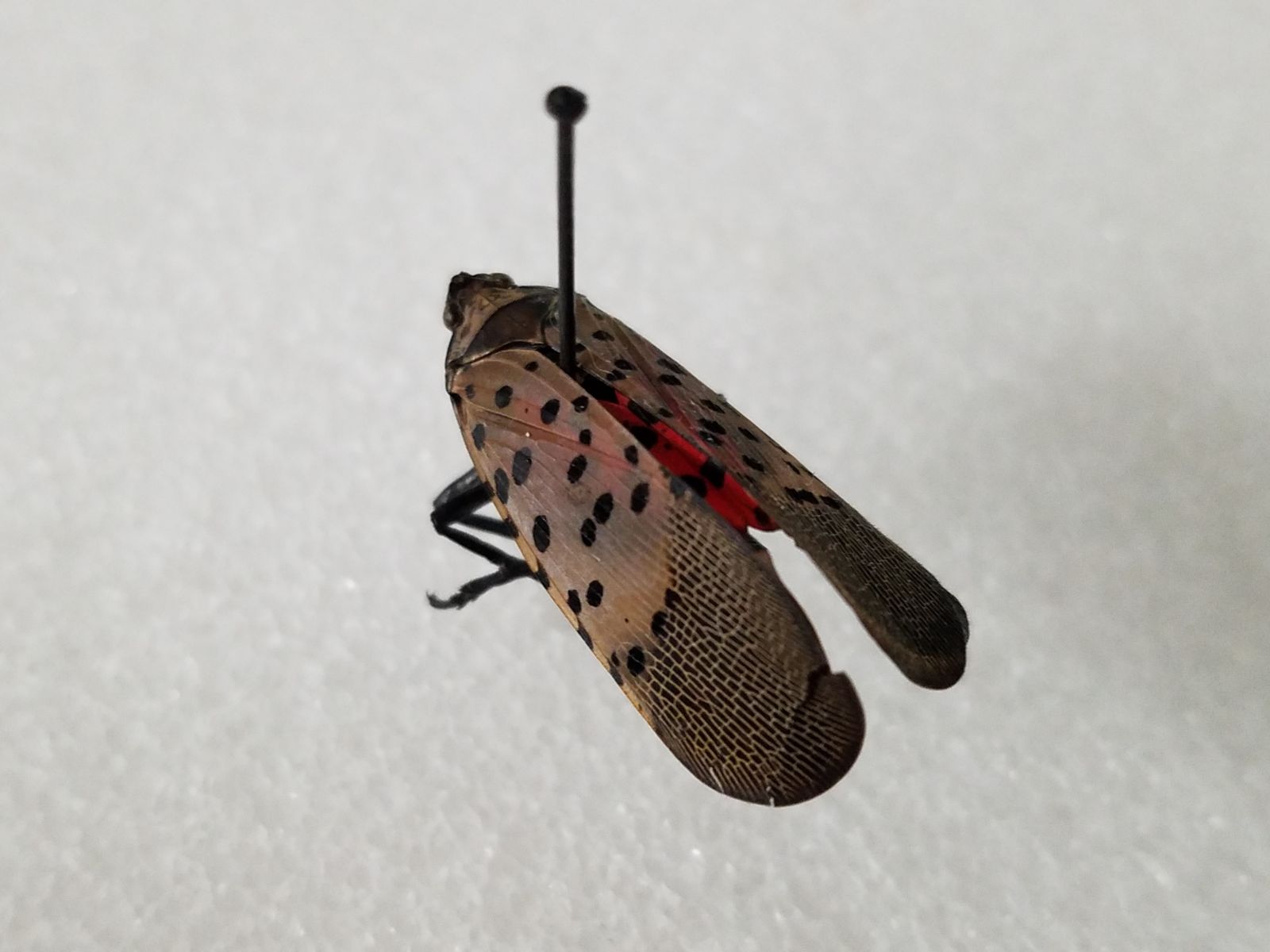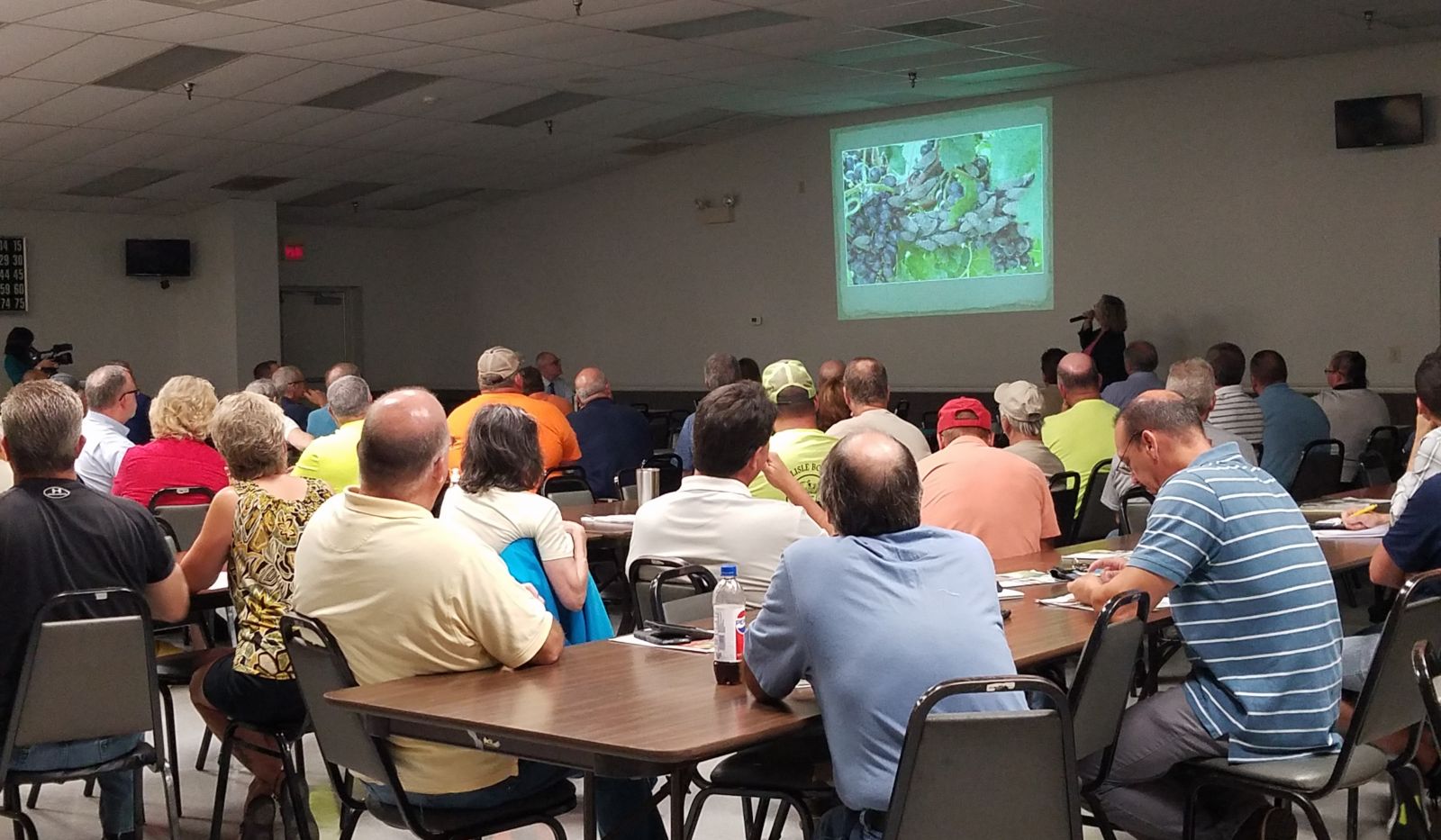Experts Urge Prevention and Control of Invasive Species: Poison Hemlock, Spotted Lanternfly
Franklin and Cumberland County Commissioners co-hosted an educational briefing on poison hemlock and spotted lanternfly, two invasive species threatening South Central Pennsylvania.
July 26, 2018 - CHAMBERSBURG, PA – Franklin and Cumberland County Commissioners co-hosted an educational briefing on poison hemlock and spotted lanternfly, two invasive species threatening South Central Pennsylvania. The event was held at the Shippensburg Firefighters Activity Center on Wednesday morning and drew approximately 70 attendees representing municipalities from both counties, as well as state agencies.
Franklin County Commissioner Bob Thomas thanked all of the agencies involved in coordinating the event. He stated, “When I first learned about poison hemlock, there were few. Two years later, there are many.” He went on to explain that poison hemlock poses a health and safety concern to residents, especially children, and is rapidly spreading throughout the state.
Trilby Libhart, Botany and Weed Specialist from the Pennsylvania Department of Agriculture, presented information on identifying and properly disposing of poison hemlock. The plant grows in both shady, moist areas as well as in sun. It is fern-like and green when young, but will produce small white flowers in an umbrella shape, similar to Queen Anne’s Lace. All parts of poison hemlock are toxic and symptoms can range from a severe rash if touched, to the possibility of death if eaten.

Above image: Trilby Libhart, Botany and Weed Specialist from the Pennsylvania Department of Agriculture presents on poison hemlock

Above image (credit to USDA Forest Service): Poison hemlock
One plant can produce up to 40,000 seeds which are viable for 6 years, making eradication difficult. Poison hemlock requires persistent control. Treated areas should be periodically monitored for missed plants, new growth and emerging seedlings. Once removed, plant debris remains poisonous for 3 years. “If you are handling the plant, always wear long sleeves, long pants—protect yourself,” Ms. Libhart said.
Precautions to take when handling poison hemlock:
- Use a mask when mowing areas thought to contain poison hemlock
- Wear protective clothing
- Wash anything that comes in contact with poison hemlock with soap and water
- If you identify poison hemlock: cut it, bag it, and remove it; do not burn it
State and municipal agencies are targeting removal of poison hemlock, but all residents need to be active in eradicating this toxic plant. “Be observant. Be persistent. If you see it, acknowledge it and take care of it,” Ms. Libhart added.
Click here for Ms. Libhart's presentation.
 Above image: Craig Houghton Assistant Professor of Forestry at Penn State Mont Alto presents information on spotted lanternfly
Above image: Craig Houghton Assistant Professor of Forestry at Penn State Mont Alto presents information on spotted lanternfly
Craig Houghton, Assistant Professor of Forestry at Penn State Mont Alto, presented information on the spotted lanternfly, an invasive insect native to Asia.
The spotted lanternfly was first discovered in Berks County in 2014, but has since spread to 13 counties. The insect is not physically harmful to people, however, there is concern over its economic impact on Pennsylvania commodities.
Pennsylvania is the largest exporter of hardwoods in the nation and fourth largest producer of apples and peaches. The spotted lanternfly feeds on hardwoods like maple and walnut, stone fruit trees (peaches, apricots, etc.), and apple trees. Grape vines and hops vines are also targeted. Its preferred host is the Ailanthus altissima, or “Tree-of-heaven” (https://extension.psu.edu/tree-of-heaven).
 Above image: Adult spotted lanternfly
Above image: Adult spotted lanternfly
Mr. Houghton encourages everyone to visit the Spotted Lanternfly information page on the Penn State Extension website (https://extension.psu.edu/spotted-lanternfly) to become familiar with identifying the insect in its various stages of development.
“Be vigilant. Have a plan. If you see something, say something,” he said.
If you find a spotted lanternfly or egg mass in a municipality where it is not known to exist, report your sighting to 1-888-4BADFLY.
“We thank everyone for their partnership in addressing these potential threats. We will continue to work to build our residents’ awareness,” said Commissioner Chairman Dave Keller.
 Above image: Municipal representatives from Cumberland and Franklin Counties attend an informational session on poison hemlock and spotted lanternfly
Above image: Municipal representatives from Cumberland and Franklin Counties attend an informational session on poison hemlock and spotted lanternfly
This event was an informational session for municipalities and agencies to better address, or be ready to address, threats to our area. Information on both invasive species are included in the Franklin County Department of Emergency Services Hazard Mitigation Plan Update, found on the Franklin County website at www. franklincountypa.gov.
Return to list.

